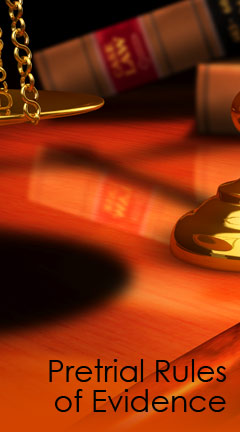Archival Notice
This is an archive page that is no longer being updated. It may contain outdated information and links may no longer function as originally intended.
Home | Glossary | Resources | Help | Course Map
The Federal Rules of Evidence state that evidence should be admitted if it is helpful, reliable, trustworthy, and assists one party or the other in proving or disproving an issue in a case. The purpose of the Federal Rules of Evidence is to secure fairness, eliminate unnecessary expense, and assist in the just determination of disputes (Federal Rule of Evidence 102).
Objections to the admission of evidence must be made in a timely fashion. Specific grounds for the objection must also be stated (Federal Rule of Evidence 103).
An offer of proof should always follow the court's ruling on exclusion of tendered evidence (Federal Rule of Evidence 103). Preliminary questions concerning qualifications of a person to be a witness, the admissibility of evidence, or the existence of a privilege are to be determined by the court. A party may always produce relevant evidence dealing with the weight of testimony or the credibility of witnesses (Federal Rule of Evidence 104).
Additional Online Courses
- What Every First Responding Officer Should Know About DNA Evidence
- Collecting DNA Evidence at Property Crime Scenes
- DNA – A Prosecutor’s Practice Notebook
- Crime Scene and DNA Basics
- Laboratory Safety Programs
- DNA Amplification
- Population Genetics and Statistics
- Non-STR DNA Markers: SNPs, Y-STRs, LCN and mtDNA
- Firearms Examiner Training
- Forensic DNA Education for Law Enforcement Decisionmakers
- What Every Investigator and Evidence Technician Should Know About DNA Evidence
- Principles of Forensic DNA for Officers of the Court
- Law 101: Legal Guide for the Forensic Expert
- Laboratory Orientation and Testing of Body Fluids and Tissues
- DNA Extraction and Quantitation
- STR Data Analysis and Interpretation
- Communication Skills, Report Writing, and Courtroom Testimony
- Español for Law Enforcement
- Amplified DNA Product Separation for Forensic Analysts


